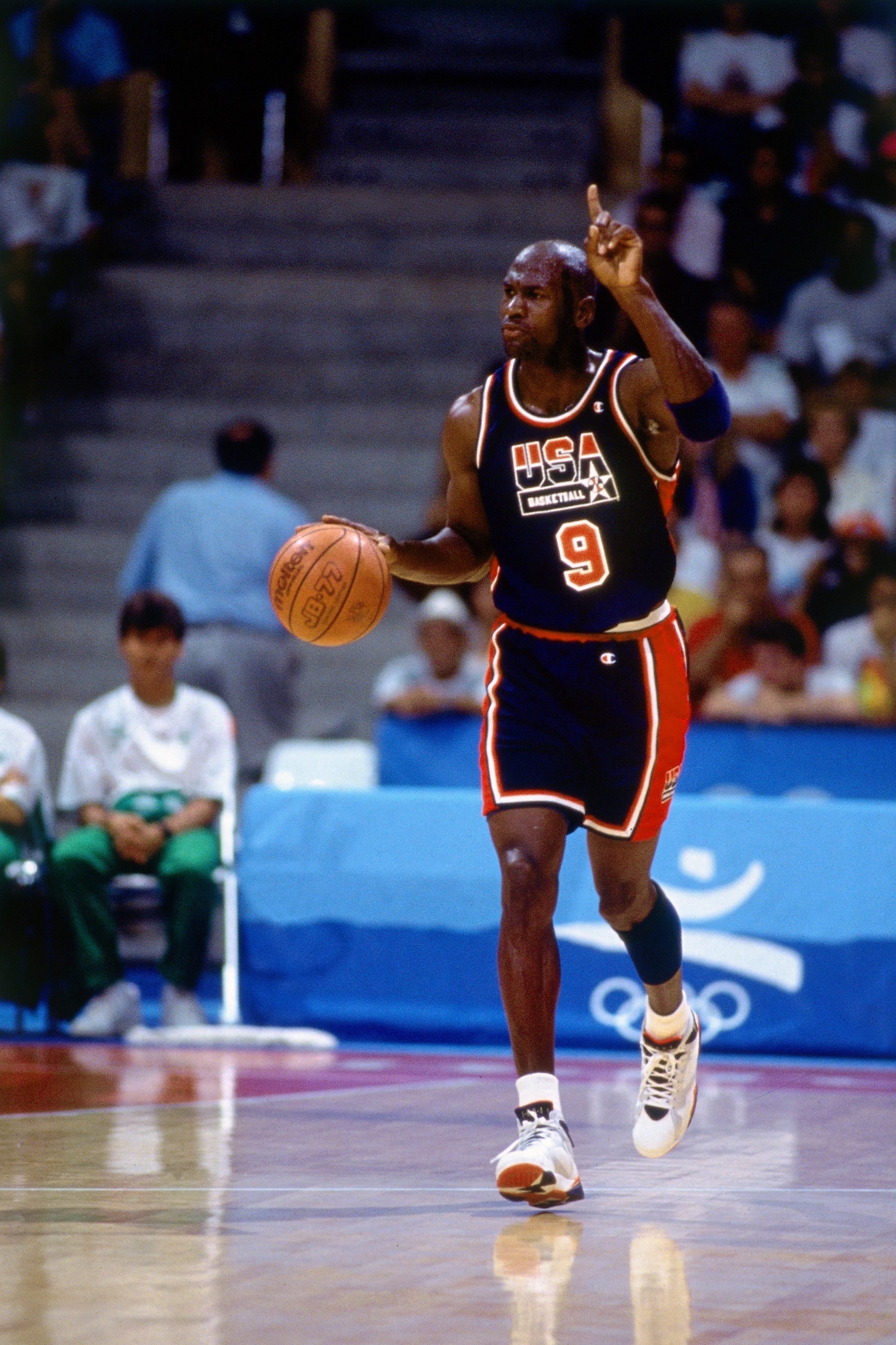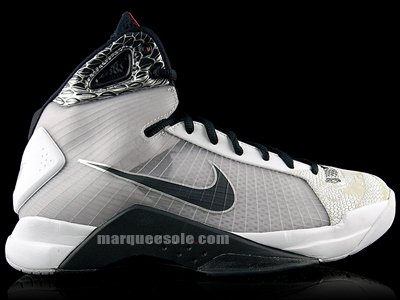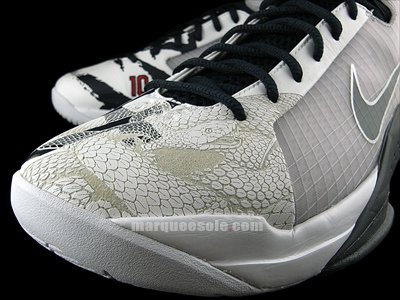Best Sneaker Moments in Olympic History
Athletic competition is ingrained in human DNA. Ancient Egyptians and Mesopotamians depicted scenes of sport in the tombs of their kings. Over 3,000 years ago the Aztecs of Mesoamerica played a ball sport similar to racquetball. Of course, the most famous dates back to ancient Greece, where the Olympics were born. Believed to have begun in 776 B.C., the Olympics are the longest-running athletic event in the world. Those first ancient games included foot races, jumping, discus throwing, javelin throwing, wrestling, the pentathlon (a combination of the previous five events), and boxing. When Paris welcomes The Games this week, 32 sports will be on the program. As the events included have expanded, so has the pomp and circumstance. It is estimated that $8.9 billion euros, or $9.7 billion dollars, have been spent in preparation for this year’s Olympics. With a stage as grand as this and all of the world’s gaze affixed to the best display of sport, there have been countless historic moments to celebrate: the 2008 swimming men’s 4x100 relay, the Miracle on Ice, Usain Bolt, Kerri Strug’s vault on a broken ankle, and this list goes on. The Olympics have also delivered iconic moments in footwear. With a larger-than-life event like the Olympics, sneaker brands often build out entire collections and marketing campaigns specifically for The Games. Nike, for example, recently unveiled 55 different shoes that are releasing for the Olympics. World-class athletes, giving world-class performances are what create the magic of the Olympics. To be successful, though, these athletes need products that help them perform at their best. Because of this, as sneakerheads, we’ve been lucky enough to be the beneficiaries of some iconic moments in footwear. Below we look at some of the best sneaker moments in Olympic history.
The Dream Team/Dream Team III
These teams exemplified peak 90’s basketball footwear, the classic silhouettes on display dressed in red white, and blue are hard to rival. The clear leader is the Air Jordan 7 ‘Olympic,’ which Michael Jordan wore en route to the Dream Team’s gold medal but this group features a number of other gems. On that original Dream Team there was also the Nike Air Force 180 worn by Charles Barkley, the Converse Bird worn by Larry Bird, and the Converse Magic Olympic Mid worn by Magic Johnson. In 1996 the USA Men’s Basketball team, dubbed the Dream Team III (Dream Team II was the moniker of the lesser-known 1994 FIBA World Championship team,) also had some iconic pairs. Scottie Pippin wore the Nike Air More Uptempo ‘Olympic’ and Penny Hardaway wore the Nike Zoom Flight ‘96. The Dream Team and Dream Team III set the standard for on-court Olympic kicks and remain as some of the best of all time.
The Redeem Team
Following a disappointing showing in the 2004 Olympics, in 2008 USA Basketball assembled the Avengers and created what was dubbed the Redeem Team. It was this team that introduced the world to what would become one of Nike’s best basketball silhouette lines of all time, the Nike Hyperdunk. The inaugural Hyperdunk 2008 was rocked by a number of players on the Redeem Team, most notably Kobe Bryant. Although at the time Kobe had just released his 4th signature shoe with Nike, the Kobe 4, he was the face of the Hyperdunk 2008. Nike gave the Redeem team a few USA-themed versions of the 2008 Hyperdunk, the most popular being the ‘United We Rise’ colorway. Nike also made a lesser-known version for Kobe himself, the Kobe Mamba PE - USA Olympic Team. Safe to say, the Redeem Team succeeded in following in the footsteps of the Dream Team, winning gold and delivering iconic kicks.
Holding the Adidas Gazelle Overhead
In the 1972 Munich Games, United States swimmer Mark Spits put on a breathtaking display, 4 days, 5 gold medals, and 5 world records. Following one victory, as he hurried to the podium for the medal ceremony he grabbed his “good-luck sneakers,” a pair of blue and white Adidas Gazelles. Without enough time to fully change, he was left holding the sneakers in his hands as he waved to the crowd atop the first-place stand on the podium. This prompted the Russians to complain that he was endorsing the shoes and violating amateurism. He was called before the Olympic committee and scolded. He then went on to finish the record-breaking week. His performance in the pool etched his name into Olympic swimming history and that moment on the podium now lives forever in the Sneaker Moments Hall of Fame.
The Man in the Gold Spikes
In the Atlanta 1996 Olympics, U.S. sprinter Michael Johnson had the whole country rooting for him as he attempted to bounce back from a disappointing performance in the previous Olympics. He had been the favorite to win gold in the 1992 Olympics but finished 6th in his final semi-heat after food poisoning left him unable to perform at his best. So there he was in 1996, facing down immense pressure to rewrite history and conquer what had previously bested him, and Johnson decided to up the ante. He broke out a pair of shiny gold-plated spikes that featured a red and navy swoosh. The shoes motivated him to run harder and faster than he ever had. He said after the Games, “I didn’t want to be standing there in gold-plated shoes with a silver medal around my neck. Two gold medals and a world record later, the hardware matched the footwear.
The Puma Controversy of 1968
In the Olympic trials leading up to the 1968 Olympic games, Puma unveiled a revolutionary new track shoe. It was lighter than all other models on the market at that time, it featured sleek velcro straps instead of bulky laces, and in place of the traditional four spikes, the Puma shoe featured 68 mini spikes. This design feature increased the shoe’s stability and allowed the runner to put more force into the ground and thus run faster. At the trials, a college runner, John Carlos was wearing the Puma shoe and delivered the first sub 20 second 200m dash in history. As athletes gathered at the Olympic Village word began to spread of this new performance-enhancing shoe. At the time Adidas was the best sportswear brand in the world, there was no number two, and then there was Puma hanging on at number three. With the athletes all enamored with their new shoes and the gold medals seemingly about to start rolling in, Puma was poised to make a run at Adidas’ throne. Then two days before the Olympics were to begin the Olympic Committee banned the shoe stating that “no new rule could be put in place during an Olympic year and the current rule mandated that track shoes could only have a maximum of 8 spikes.” The committee refused to listen to Puma’s plea that by volume their 68 mini spike setup was equivalent to that of a traditionally spiked shoe and their hopes were dashed. It is rumored that Adidas had something to do with the committee’s decision. While it is unknown that if the shoes were allowed to race Puma could have eclipsed Adidas, it did provide a historical moment of sneaker controversy.
The Nike Flyknit Racer
This sneaker started a revolution. In 2012 Nike unveiled the Flyknit Racer, and changed the running shoe market forever. The Flyknit Racer was the world’s first sneaker to utilize an upper of this style, performance, and comfort. These shoes really began to take hold when Nike dressed them in a bold neon green for Team USA’s Olympic athletes to wear on the medal podium. All the world needed was one look at athletes like Lebron James, Michael Phelps, and Serena Williams rocking those sneakers during the Olympics to be sold. The Flyknit Racer quickly took off and took over. Kanye West got a hold of the Flyknit Racer and with his co-sign the shoe became one of Nike’s best sellers. It was offered in an array of colors from a black and white cookies-and-cream esque pair dubbed the ‘Oreo,’ to the Neon pair from the Olympics. The Flyknit Racer had a color for every outfit. The shoe had a lot going for it but its time on the Olympic podium helped launch it into orbit.

























